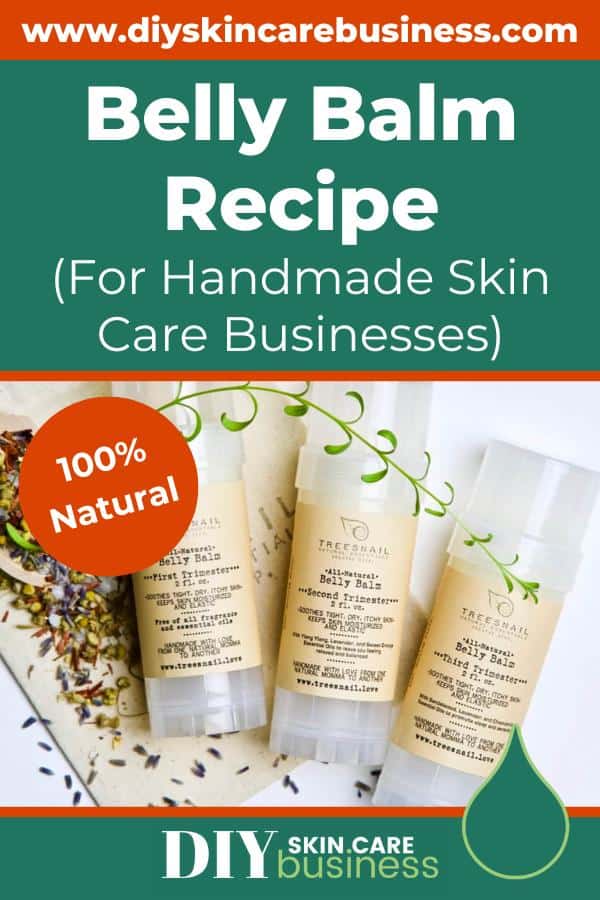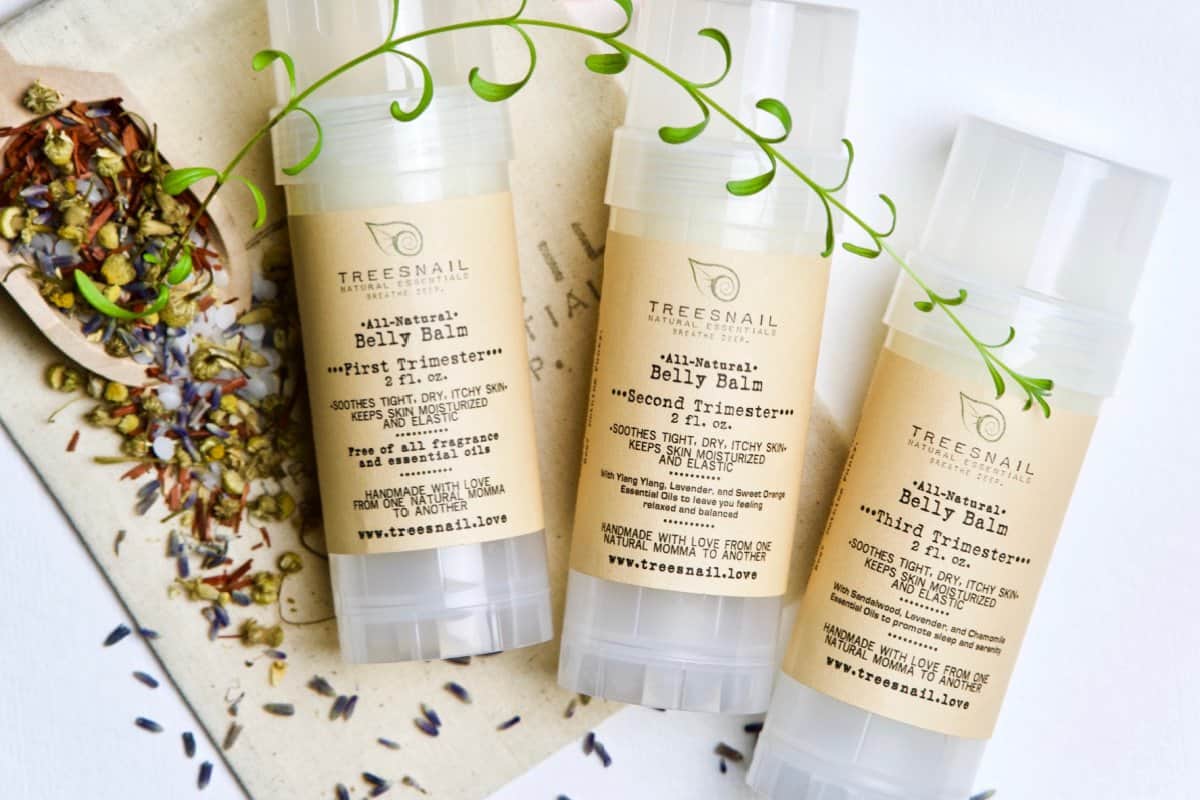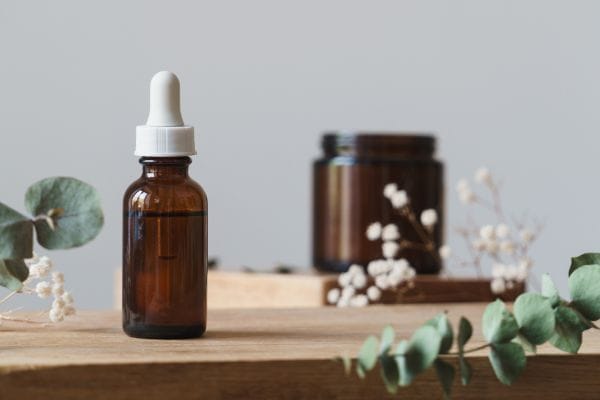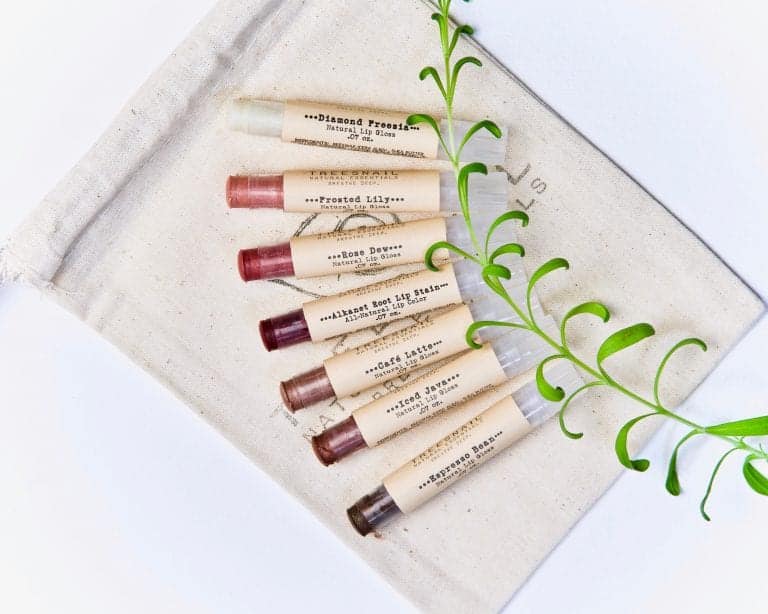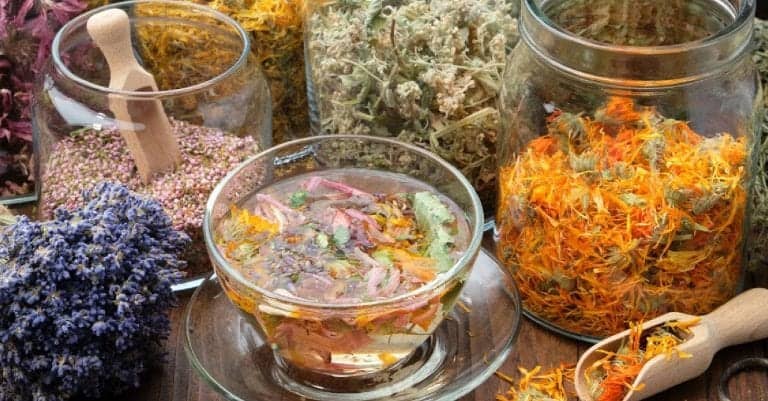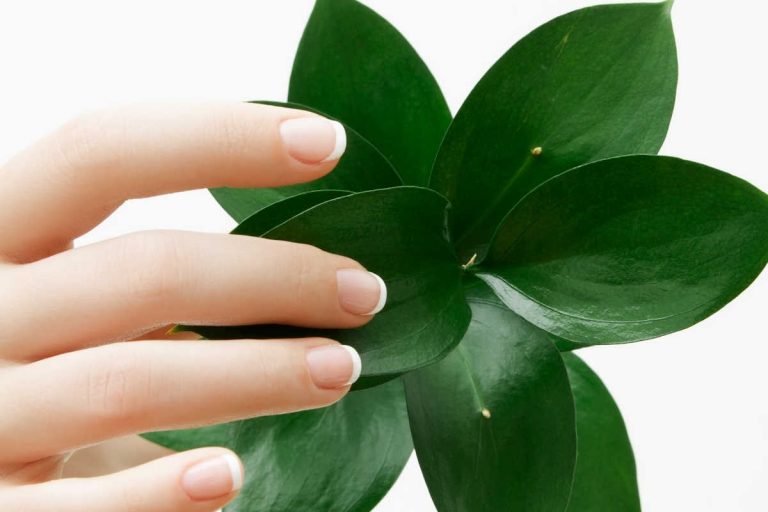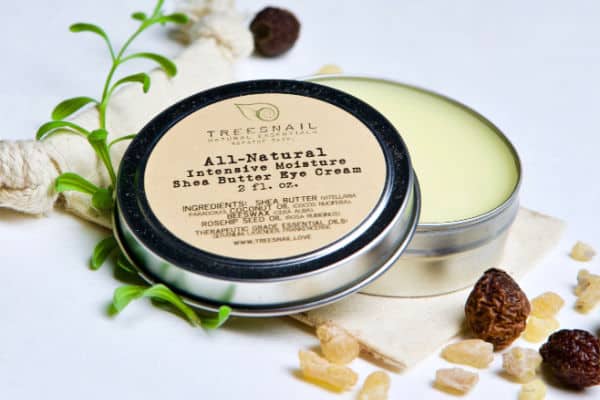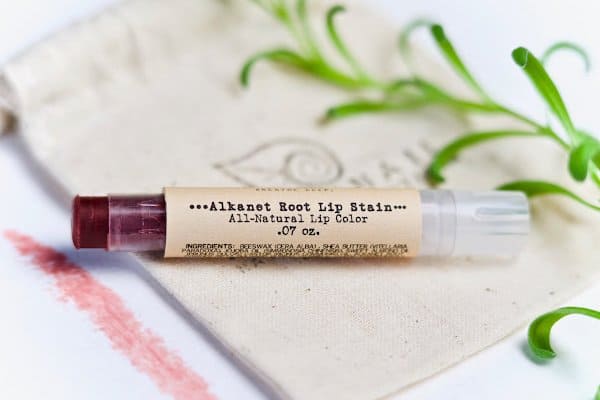If your target market for your handmade skincare line has the phrase ‘natural living’ or ‘crunchy mama’ floating around in their vocabulary, this organic belly balm recipe has your (business) name all over it!
Belly balm is used by women during their pregnancy to help delicate, stretching skin remain more comfortable, elastic, and itch-free.
While the product name specifically refers to the belly, it can be used on any part of the skin that is growing: belly, hips, chest, thighs, etc.
I can tell you from experience that this belly balm recipe has HUGE revenue-growing potential for small-batch skin care businesses.
Once a pregnant mama uses it personally, it is forever on her list of *must-have* items to give for baby showers, hospital bags, and even postpartum care packages.
An absolute SLAM. DUNK. for your handmade product line.
In this article, you’ll not only learn how to create this organic belly balm recipe at home, but also how to brand your belly balm to speak directly to your ideal target audience.
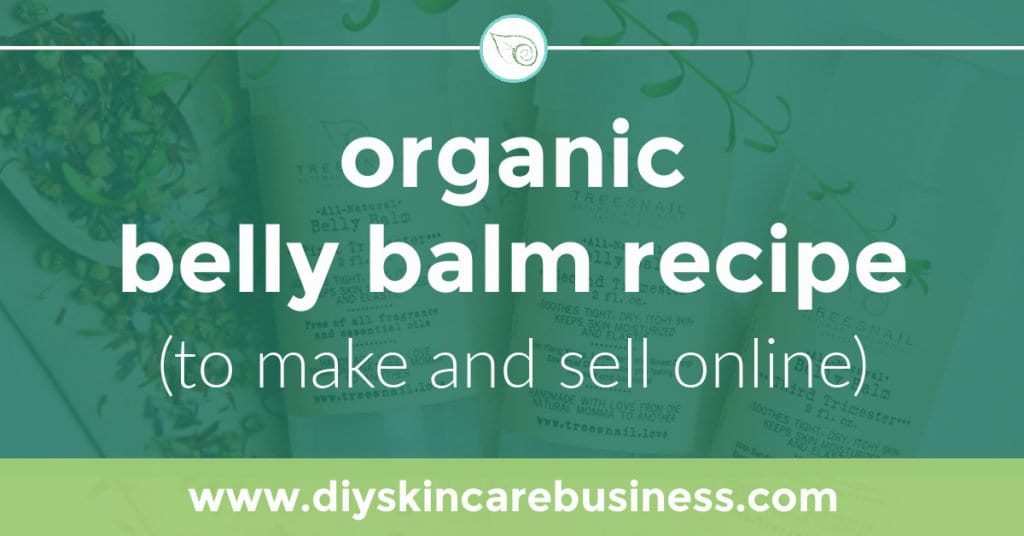
This post may contain affiliate links, meaning I get a commission if you decide to make a purchase through my links (at no cost to you). Please read the disclosure for more information.
Why Make Organic Belly Balm?
‘Organic’ means made with ingredients that have been grown and harvested without the use of chemicals and pesticides.
Using organic products and eating organic food is important for everyone, but especially for women during pregnancy.
As the body’s largest organ, skin absorbs and passes onto the bloodstream a large amount of what it comes into contact with.
This means that even before the baby is born, anything a mother uses on her body may cross through the placenta and impact her child.
In addition to the safety of her baby, a mother’s skin changes drastically during and after pregnancy.
The products and ingredients she uses need to be gentle, safe, and soothing with a minimal chance of causing allergies.
This organic belly balm recipe checks all of the boxes to keep momma and her little love safe from day one.

Can Pregnancy Stretch Marks Be Prevented?
As a handmade business owner, it is important to realize that the general public often refers to belly balm as ‘stretch mark cream’.
Stretch marks are caused by several things:
- Genetics (they can run in families)
- Stress and Hormones (both weaken the elasticity of skin)
- Diet (lack of proper hydration or collagen)
- Itching dry skin (also weakens the skin’s elasticity)
Belly balm is incredibly moisturizing and can make growing skin more comfortable and less itchy.
That being said, as an entrepreneur, you have no control over the other aspects and possibilities listed above.
When you are writing your product listings, designing your product labels, creating your marketing graphics and copy, and communicating with your customers, MAKE SURE you use correct terminology and take the opportunity to educate any time possible.

Do I Need FDA Approval to Sell Homemade Belly Balm?
It depends on the language you use and the intent you communicate about your balm.
According to the FDA Cosmetics Laws & Regulations, skin moisturizers are considered cosmetics.
Under the FD&C Act, cosmetics do not require approval to be sold.
BUT…the second you suggest that your organic belly balm can CURE stretch marks, PREVENT stretch marks, or be used as a TREATMENT for dry skin, you’re moving your balm from the COSMETIC category into the DRUG category.
Once you move yourself into the ‘drug’ category, you a.b.s.o.l.u.t.e.l.y. need FDA approval to sell your handmade belly balm (or any other product you make, for that matter).
There are so many beautiful ways to describe the benefits of this product while keeping it in the cosmetic category – and keeping your company out of legal waters.
How to Make Organic Belly Balm from Home
Supplies You Need to Make Belly Balm:
Note:
- The double boiler and the glass Pyrex options above are an either/or suggestion. It depends on the size of the batch you are making (and personal preference). This recipe makes (4) 2 oz. balms and it fits exactly in the double boiler. If you’ll be doubling the batch, be sure to get the larger glass Pyrex.
Organic Belly Balm Ingredients:
Organic Belly Balm Recipe
Yields (4) 2 oz. containers
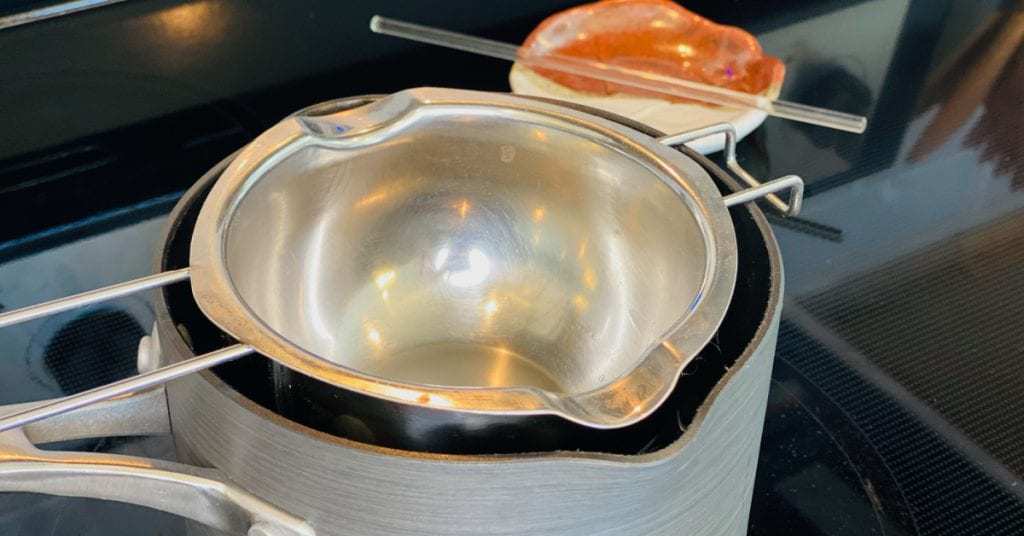
- 4 oz. organic cocoa butter
- 4 oz. organic beeswax
- 2 oz. organic coconut oil
- 2 oz. organic sweet almond oil
- 1/2 oz. organic mango butter (*you can substitute organic shea butter if you prefer)
- 1/2 oz. organic castor oil
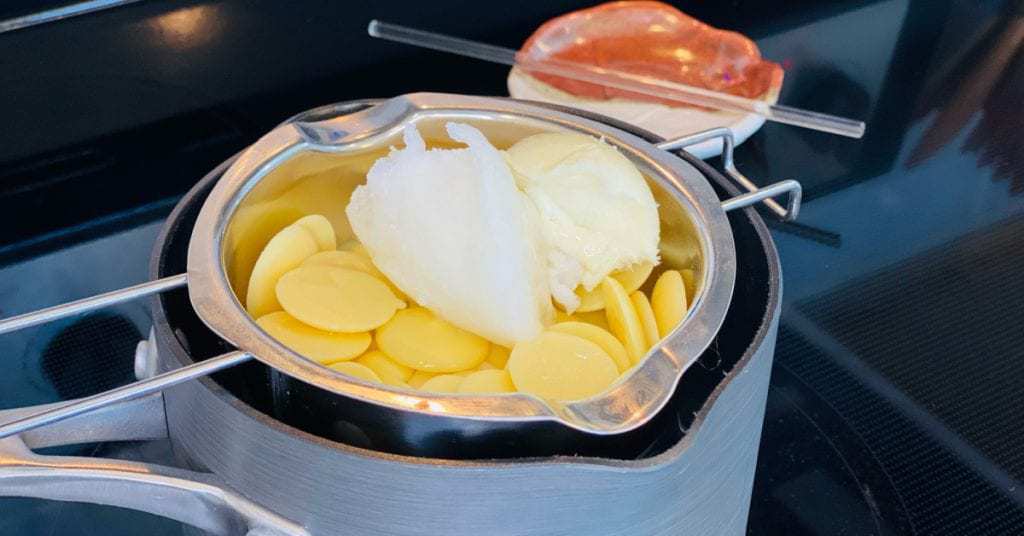
*Using a slow melt method has always kept me from having issues with grainy shea butter.
If you need to melt ingredients faster, you can bring the water to a low simmer; add the shea butter after the other ingredients are melted and off the heat.
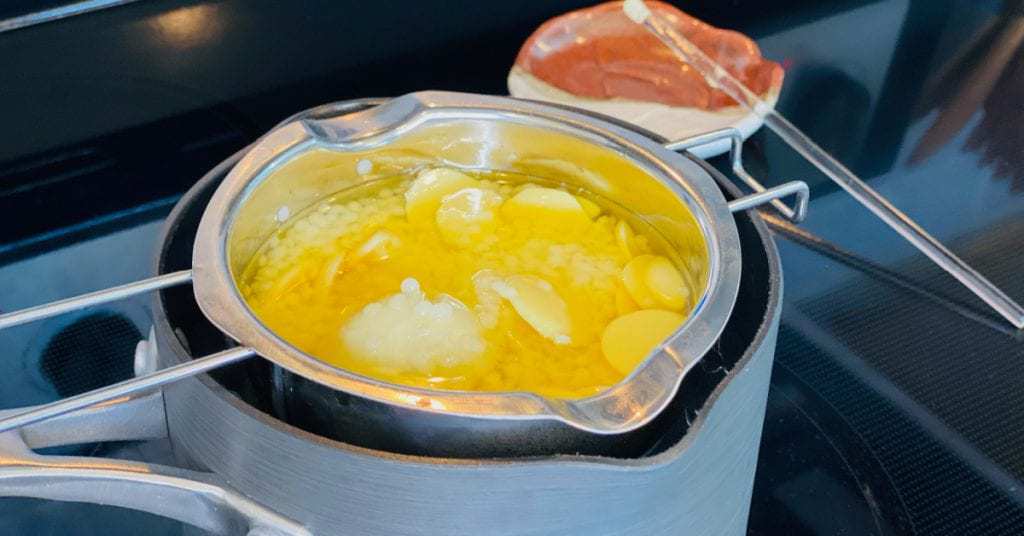
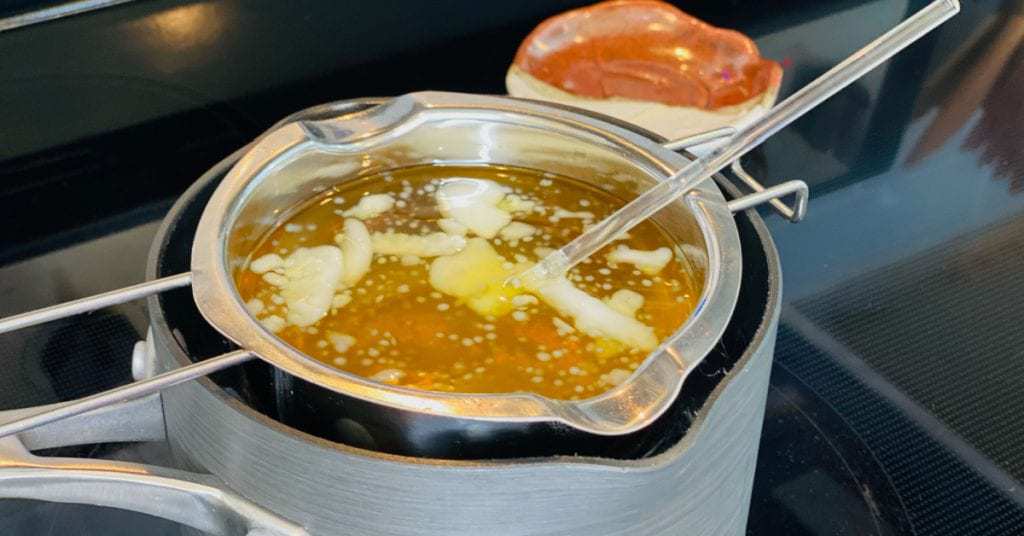
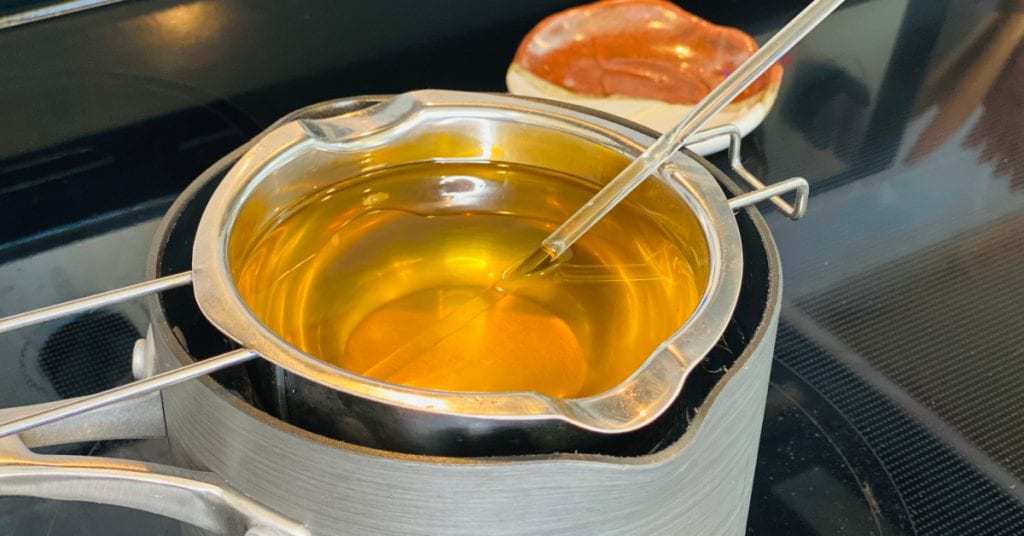
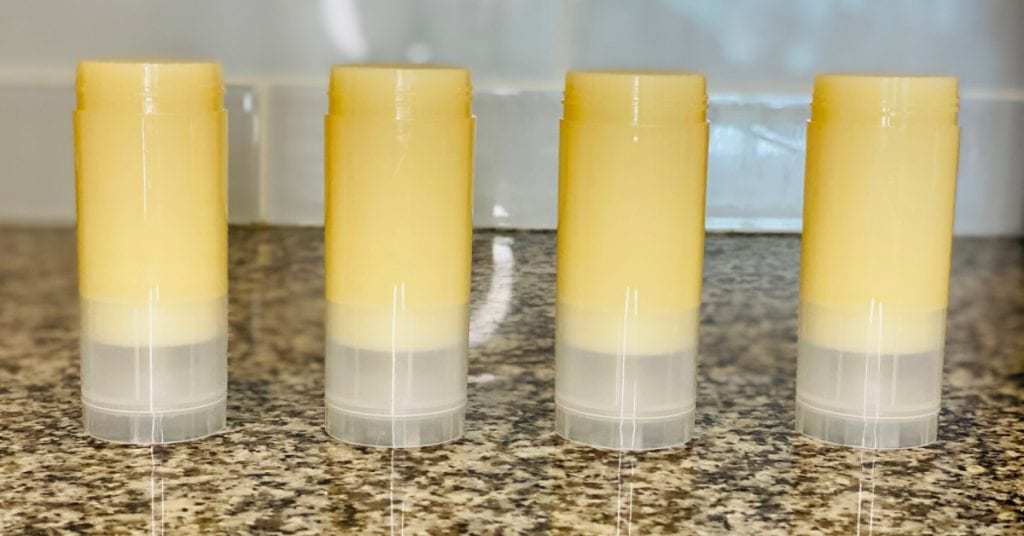
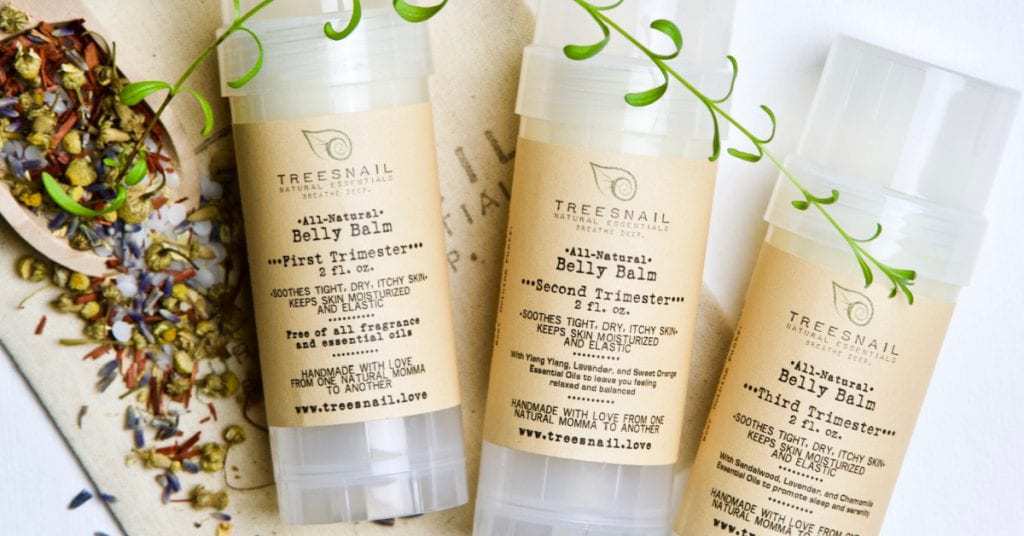
(E-commerce sellers won’t need to worry about this obviously, but an important detail if you do any in-person sales.)
How to Brand Your Belly Balm to Sell Online
The branding possibilities for natural belly balm are incredibly vast – but every target market varies with what they will be attracted to in terms of product packaging, label design, and unboxing details.
Make sure you take the time to fully understand your target audience.
While the tutorial above shows a lotion bar tube, this recipe can be tweaked to open yourself up to different types of containers and applications.
Check out our in-depth blog post, the Handmade Lotion Bar Packaging Guide, for tips on types of containers, labels, unboxing details, and more!
Packaging and labeling choices are just the tip of the branding iceberg.
To have a high-converting product and a business that customers return to again and again, you want your skin care line to be consistently branded in every product you sell, color you use, and email you send.
Whether you are just getting started in your entrepreneurial journey or are considering a rebrand, be sure to check out our private Facebook group, DIY Skin Biz Community – connect with other makers in our industry!
Grow Your Skin Care Business!
Browse through the resources below to boost your handmade business visibility and profitability!
